What we were after, one and all, was to produce a book which would be pleasant to see and to handle, with a cheerful outside, and print easy to read and good for the eyes within—tempting to look at on the shelf, and of a size convenient for the pocket, one that could be taken for a country ramble or for a railway journey or on shipboard. —Ernest Rhys
The binding styles of the Everyman's Library varied considerably over the years, going through changes both in design and in size. Scarcity of materials during two world wars caused some of these changes, as also the efforts of Dent to adhere to one of the primary objects of the series, to keep the price down so that it was affordable by "Everyman." From 1906 until 1953, the series was produced in a small foolscap octavo size (6-11/16 × 4-1/4 inches), encompassing three standard binding styles, along with special leatherette and library bindings. From 1953 until 1978, the series was produced in a larger, crown octavo size (7-1/8 × 4-5/8 inches) in two binding styles, while the leather and library bindings were discontinued. Binding style numbering follows Seymour (Guide 67). Unless otherwise noted, all images on this page are from the collection of Jeffrey S. Anderson.
| Flatback Era | Shield Era | Ravilious Era | Large Format Era | Dutton Bindings | Other Bindings | Paperbacks |
Click thumbnails to enlarge images unless otherwise indicated
 |
 |
 |
 |
 |
 |
 |
 |
 |
 |
 |
 |
 |
| BIO | CLA | EBL | FIC | HIS | ORA | POD | REF | ROM | SCI | PHT | TRA | FYP |
| Grey | Pale Green |
Orange | Carmine | Scarlet | Brown | Olive | Maroon | Blue | Fawn | Purple | Dark Green |
Light Blue |
| Style 1 standard cloth bindings with flat spines, showing section categories and colors. | ||||||||||||
| Click here for an enlarged image | ||||||||||||
 |
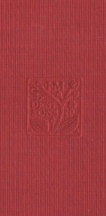 |
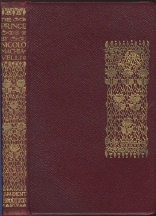 |
||||||||||
| Style 1a spine | Style 1 & 2 Cover Stamping | Maroon leatherette | ||||||||||
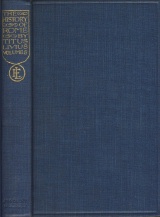 |
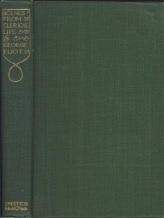 |
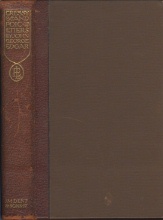 |
||||||||||
| Dent library binding | Dutton library binding | Quarter pigskin binding | ||||||||||
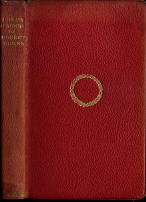 |
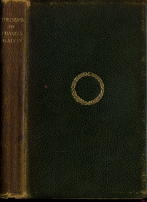 |
|||||||||||
| Bedford in red morocco | Bedford in roan morocco | |||||||||||
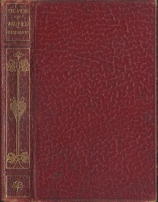 |
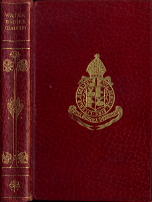 |
|||||||||||
| Aldine plain cover | Aldine presentation cover | |||||||||||
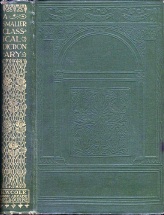 |
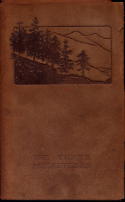 |
|||||||||||
| Australian binding | Suede binding | |||||||||||
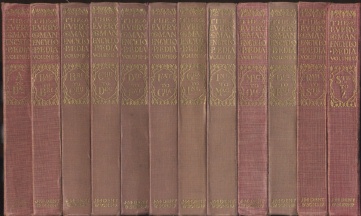 |
||||||||||||
| The Everyman's Encyclopedia | ||||||||||||
The Flatback Era
(1906-28)
Style 1 is characterized in its standard cloth version by a flat spine with an elaborate gilt floral decoration designed by Reginald Knowles. It originally sold for one shilling.The series was divided into thirteen sections, with bindings of a different color for each (section abbreviations follow History 13-14).
During the First World War, Dent began using an imitation gold leaf on the spines. This material unfortunately tarnishes easily, and accounts for the dull and sometimes illegible spines published from 1915-1927. Seymour designates these as binding Style 1a, an example of which appears at right.
In addition to the standard cloth, the earliest editions were also produced in three other styles: leatherette, a buckram library binding, and a deluxe library binding. Later in this period, limited selections of titles were released in the special Bedford and Aldine bindings, detailed below.
- § Maroon leatherette.
- This binding has a spine that is identical to the standard flat spine, with an additional floral gilt design on the cover. The corners of the binding are rounded, and the top edge of the pages is gilt. A silk book marker is also bound in. It originally sold for two shillings--twice the price of the standard cloth. This binding was phased out near the time that the quarter pigskin binding was discontinued (Guide 3).
- § Library binding in buckram.
- This style has a much simpler gilt design, with the title enclosed in a gilt border with a round or teardrop shaped loop at the bottom. If it was published by Dent, this loop contains an "E" with an overlapping "L", with the Dent name at the foot of the spine, usually blind-stamped. The loop is blank if it is a Dutton edition, with the Dutton name stamped in gold at the foot. Colors of these bindings varied. This binding continued to be produced into the "Shield Era" until 1934 (Guide 2; History 6).
- § Deluxe library binding in quarter pigskin.
- The spine is like the plain library binding, but is bound in a rich brown quarter pigskin. This binding was only available in the early days of the library until 1917, but as late as 1921 in reprints (Guide 2; History 6).
- § Bedford binding in flexible morocco leather.
- Issued in "32 specially selected volumes" and with a "charming photogravure portrait and title page" (see example), the Bedford binding was available from 1912-c.1918 (Guide 3-4; History 7).
- § Aldine morocco binding.
- Available from 1909-c.1918, the Aldine binding has a pebbled texture and is somewhat sturdier than the Bedford or the leatherette. Both this binding and the Bedford were commonly used for presentation purposes, and both lack any external indications of actually being part of Everyman's Library (Guide 3-4; History 6).
- § Australian binding.
- Everyman's Library was distributed in Australia by E. W. Cole of Melbourne. These volumes were printed in Great Britain, but by shipping them unbound, Dent was able to save on shipping costs. They were then bound in Australia with the typical Style 1 floral gilt spine, but with "E. W. Cole Book Arcade Melbourne" at the foot, and a cover that was elaborately blind-stamped (Guide 4-5).
- § Suede binding (brown yapp).
- Yapp is a style of bookbinding with limp leather and overlapping edges. It was used briefly by Dents in both the Everyman's and Wayfarer's Library series from 1919-1925. It is comparatively rare, and "seems to be an experimental replacement for either the early leatherette or the quarter pigskin" (History 7), or perhaps it was intended as a gift binding. It has no printing or ornamentation on the spine and is thus unattractive on the shelf, not to mention it is so flexible that it has difficulty standing upright.
- § The Everyman's Encyclopedia.
- This set (Nos. 641-52) in 12 volumes appeared in 1913. It was originally issued at the rate of one volume per month. There were several formats, including a buckram, maroon leatherette, and quarter pigskin. The set shown at left is in the standard flat-back binding with blind-stamped cover, and though faded, it is in the standard maroon of the reference section. With the publication of the second edition in 1931, it was produced in a larger format and dropped from the serial numbering section, though "it was still considered part of EML" until it was transferred to the reference library with the third edition of 1949 (Guide 7-8, 143; History 115).
 |
 |
 |
 |
 |
 |
 |
 |
 |
 |
 |
 |
 |
| BIO | CLA | EBL | FIC | HIS | ORA | POD | REF | ROM | SCI | PHT | TRA | FYP |
| Grey | Pale Green |
Orange | Carmine | Scarlet | Brown | Olive | Maroon | Blue | Fawn | Purple | Dark Green |
Light Blue |
| Style 2 standard cloth bindings, showing section categories and colors | ||||||||||||
| Click here for an enlarged image | ||||||||||||
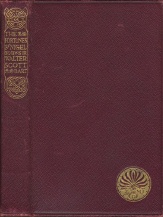 |
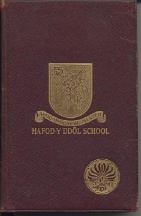 |
|||||||||||
| Style 2 leatherette spine and cover | Style 2 with custom stamping | |||||||||||
The Shield Era
(1928-34)
The Style 2 binding was created in 1928, largely occasioned by the desire to use real gold again for the spine gilding. Like the first binding, the design was floral, but in the shape of a cartouche or shield, and blocked only about half-way down the spine. As part of this redesign, the spine was also changed from the original flat back to a rounded back, which was more durable. The slightly ribbed texture of the binding was retained, as was the blind-stamped design on the cover and the Reginald Knowles endpapers. There was no change in the design of the standard library binding.
The new leatherette binding was actually introduced around 1921, but is grouped here for discussion since it is the second such binding style, and endured through 1934. The leather used was tanned using a process that increased the leather's resistance to deteriorization, and was hand-grained and hand-fitted. The quality of this new binding is palpably sturdier than the old leatherette, and the simpler Celtic knot-work spine design realized a substantial savings in gold leaf, as did the small circular "JMD" device on the cover. A fine copy in this binding is certainly one of the most attractive Dents produced.
Because the new leatherette left more open space on the cover, this binding became commonly used for school prize presentation copies, upon which the seal of the school or some other emblem could be embossed in gold. It is unlikely that this would have been doneby Dent, but rather by taking a copy elsewhere for the custom stamping. A nice example of this is shown at right.
 |
 |
 |
 |
 |
 |
 |
 |
 |
 |
 |
 |
 |
|
| BIO | CLA | EBL | FIC | HIS | ORA | POD | REF | ROM | SCI | PHT | TRA | FYP | |
| Rose | Apple Green |
Orange | Carmine | Scarlet | Brown | Olive | Maroon | Light Blue |
Fawn | Deep Blue |
Dark Green |
Blue | |
| Style 3 standard cloth bindings, showing section categories and colors | |||||||||||||
| Click here for an enlarged image | |||||||||||||
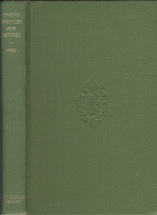 |
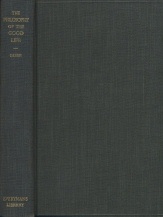 |
||||||||||||
| Style 3 cloth spine & cover | Style 3 library binding | ||||||||||||
 |
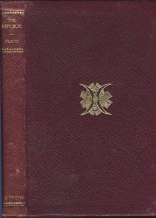 |
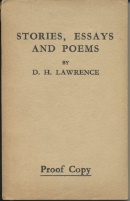 |
|||||||||||
| Style 3 leather spine | Style 3 leather (Dutton 1948) | Example of a proof copy (1939) | |||||||||||
The Ravilious Era
(1935-52)
Style 3 represented a drastic design change, involving the use of the Perpetua Roman type-face designed by Eric Gill (1882-1940) for the titles, abstract ornamental woodcuts by Eric Ravilious (1903-42) on the title-page and cover, and natural-grain cloth in place of the original grained smooth-finish cloth (Reader's Guide to Everyman's Library, 4th ed. [RG4], xx-xxi).
Despite the evident intention of Dents to reduce the number of color variants to seven in this redesign (RG4, xix), binding style 3 continued to have thirteen variants, though they are somewhat different than the previous bindings. Lacking any authoritative reference for the names of these new colors, I have improvised.
The library binding was of the same material as in previous editions. The spine was simplified as in the standard cloth, but without theblind stamping on the cover. Library bindings were not issued after 1939.
The leatherette binding was similarly simplified. It appears that this binding ceased production with the strictures of the wartime economy in 1940 (Guide 7). However, the image at left of Plato's Republic (No. 64) is something of an oddity produced by Dutton in 1948, with additional gilt scrollwork on the spine and a gilt Ravilious stamping on the cover. Robin Garton, in his introduction to For Shop Use Only (Devizes: Garton, 1993), is thus mistaken when he writes that this design (block 21 in the catalogue) was not used by Dents at all.
Here also is an example of a proof copy from this period: No. 958, D. H. Lawrence's Stories, Essays, and Poems (1939). The covers are paper wrapped around what appears to be a normal book block. The spine bears the title and author in the same black typeface as the cover.
 |
 |
 |
 |
 |
 |
 |
||||||
| Pale Red |
Black | Green | Plum | Blue | Carmine | Brown | ||||||
| Style 4 standard cloth bindings. | ||||||||||||
| Click here for an enlarged image | ||||||||||||
 |
 |
 |
||||||||||
| Style 4 bronze gilt | No. 663 Everyman Anthology |
Style 5 spine | ||||||||||
The Large Format Era
(1953-1982)
In 1953 Dents introduced the Style 4 design, the most drastic format change to date, increasing the size of the volumes to the larger crown octavo (7-1/8 × 4-5/8 inches), which allowed for larger margins, and redesigning the spine imprints, title pages, endpapers, and dustjackets. This change seems largely to have been in response to the demands of libraries, where the smaller sized volumes presented shelving difficulties.
The thirteen colors were finally reduced to seven as shown, though some of these, particularly pale red and brown, also exist in slightly different shades than the ones shown at left, perhaps due to cloth and dye inconsistencies. The color ceased having any association with the section designation, and after 1961, section designations were discontinued altogether (Guide 66).
The spines retained the simplicity of the Style 3 binding, but the interlocking script 'EL' was employed at the foot of the spine, and it was also used in a repeating pattern on the endpapers. The spine was most commonly gilt in gold, but there was also a bronze or copper-colored gilt employed which I have only seen on black, blue, and green covers.
To celebrate the Diamond Jubilee of Everyman's Library in 1966, Dents published An Everyman Anthology (No. 663), edited by J. B. Priestley. It was issued in the special binding shown at left, with special endpapers and dustjacket .
Style 5 began to be produced circa 1969, though production of Style 4 was not entirely phased out until 1970. The gilt Aldine Press anchor-and-dolphin icon replaced the 'EL' design on the spine, and the 'Everyman's Library" label returned to the foot of the spine. Endpapers were changed to a plain light blue. The overall quality of the cloth binding, and eventually the pages, declined noticeably. The colors changed somewhat as well. This binding style continued until the library ceased production in 1982.
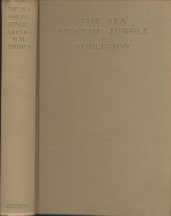 | |
| No. 800F Dutton binding (1928) | |
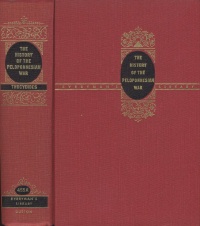 |
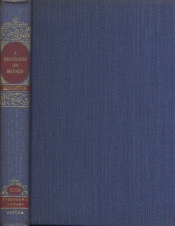 |
| New American Edition, decorated cover |
New American Edition, plain cover |
Dutton Bindings
In 1927-1928, Dutton released six titles in the United States under the Everyman rubric. The endpapers are the familiar Knowles design, but the binding resembles no other EML publication. These were numbered 800A-800F. For a full discussion, see Guide 18-19.
In 1950-1953, Dutton published what it called the New American Edition, comprised of 32 volumes, 22 of which had been previously issued in the regular Everyman's Library editions, and 10 of which were newly included. The only one to have a regular dustjacket was the last and only one published in 1953, Henry James' Selected Fiction (No. 649A). The others were sold in cellophane wrappers. Most had the decorated covers, but some were published in plain covers, as shown at left. For details, see History 28.
![]()
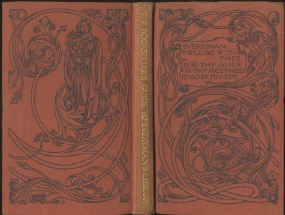 | |
| The Bookseller's Guide (1932) | |
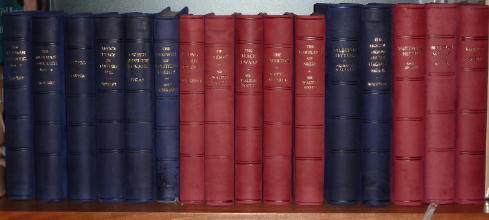 | |
| Source: Terry Seymour | |
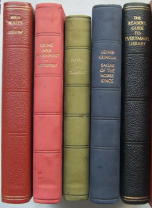 | |
| Source: Simon Coombs |
Other Bindings
The Bookseller's Guide is not properly part of the regular Everyman's Library, but the binding is so attractive, it is included here. It is a modified version of No. 889, Farquharson's Reader's Guide to Everyman's Library (1932), and was issued as a presentation edition for booksellers. The editor's essay was omitted, it was printed on thin paper to keep it pocket-sized, and an appendix was added detailing the three binding styles and their prices.
Of the Taylor/Burton Everyman collection Seymour writes: "Richard Burton was an avid reader and a great fan of Everyman's Library. Elizabeth Taylor, aware of this affection, arranged to assemble a nominally complete collection of Everyman's Library. . . . She then spent a considerable sum of money having the volumes rebound in a suede-like leather, with lavish end papers and gilding on all edges. At least four colors of leather were used: pink, royal blue, forest green, and mustard yellow. . . . Liz presented this gift to Richard for his birthday. Burton retained the books for the remainder of his life. Several years after his 1984 death, his widow, Sally Hay, sold the books at auction for the benefit of charity" (History 28-29). In the second image there are examples of red and black in a rough grain morocco instead of suede.
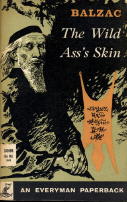 |
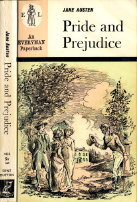 |
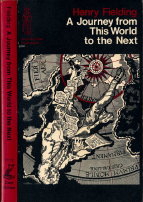 |
||||||||||
| No.1026 (1960) | No.1022 (1968) | No.1112 (1973) |
||||||||||
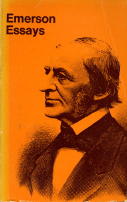 |
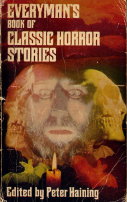 |
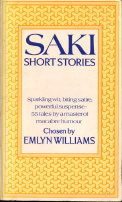 |
||||||||||
| No.1198 (1976) | No.1158 (1976) | No.1105 (1978) |
||||||||||
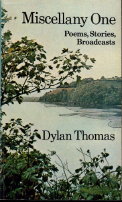 |
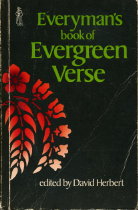 |
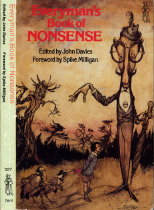 |
||||||||||
| No.1106 (1979) | No.1246 (1981) | No.1227 (1982) |
||||||||||
Paperbacks
Paperbacks were inevitable," writes Donald Ross. "Public taste was changing, and there was a growing body of students who would not only welcome the cheapest authentic text on the market…but preferred a paperback edition to a hardback" (RG4 xvii). In early 1960 Dent began printing Everyman titles in paperback and by the end of 1970, this number had increased to 164. By Ron Holl's latest count (based on Seymour's History), there are 379 paperback titles, of which at least 18 were issued in paperback only (such as No.1158 Horror, No.1227 Nonsense, and No.1246 Evergreen). Seymour estimates there are 400 different paperback cover designs (History 14).
The Aldine anchor and dolphin colophon appeared at the base of the spine until 1980, when it was replaced by a small image of the shepherd. The shepherd colophon sometimes appears on the cover and sometimes not, either in the upper left or the bottom right corners. Sizes vary but mostly match the page size of the larger format hardbacks. Some are slightly larger, such as No.1127 (cheap paper) and No.1246 (acid-free paper). Titles in the style of No.1022 were printed on acid-free paper. Later paperbacks were of no better quality than a typical mass market title, such as the pulp fiction treatment of No.1158.
Many collectors prefer not to collect the paperback editions, but if one's aim is to assemble a collection containing every EML title from 1906-1982, one will at least have to acquire those titles published only in paperback.
![]()
Dandelion device designed by Aubrey Beardsley for Dent's 1893-4 publication of Morte d'Arthur. It is an example of what is called 'canting' heraldry, for it is a visual pun on the French for dandelion, 'dent de lion'. See Aldine House (London: Dent, 1926), 10.